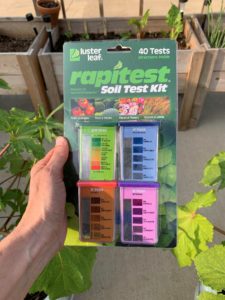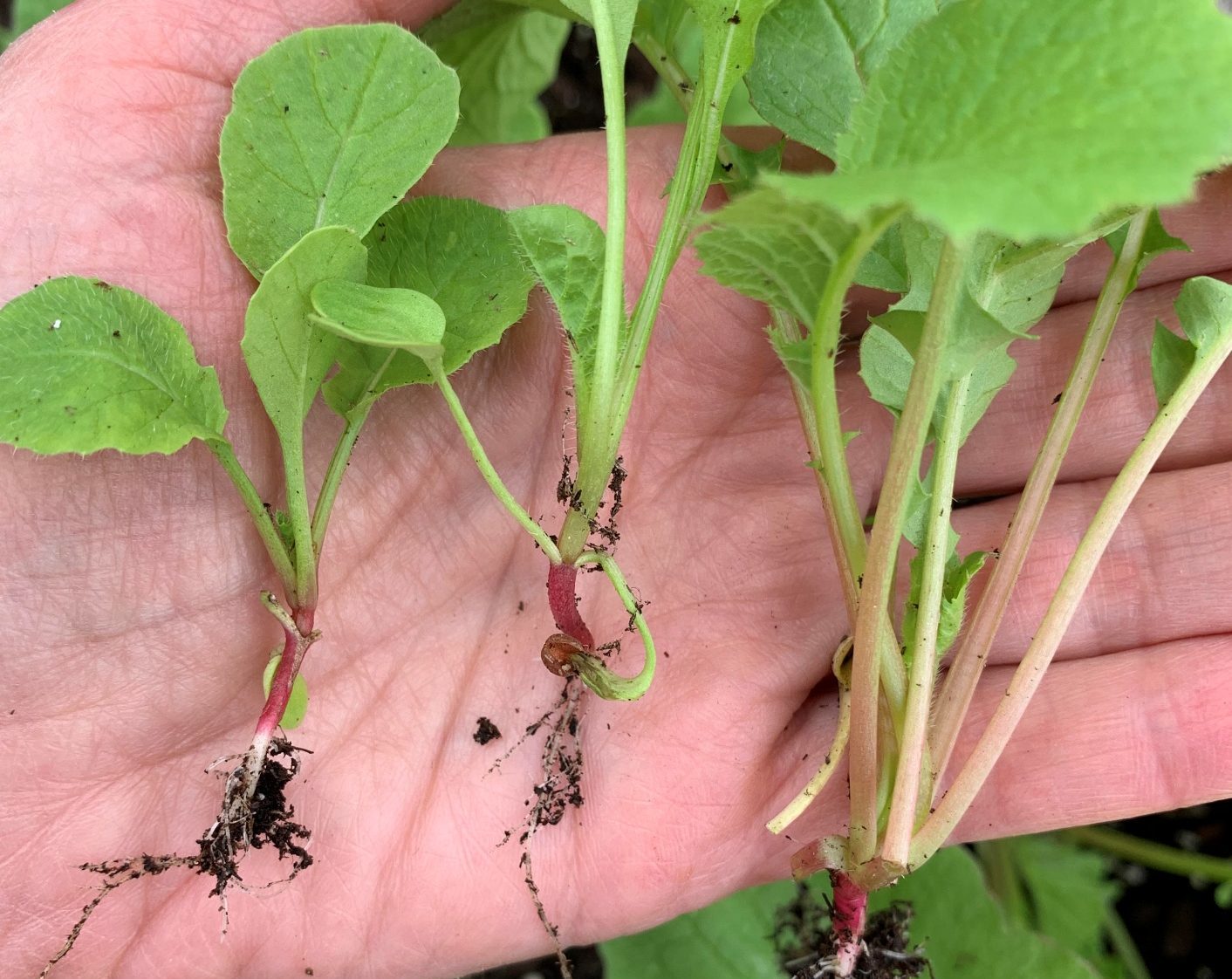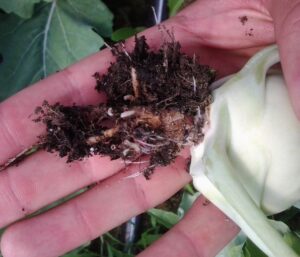Radishes are considered by many to be one of the easiest crops to grow, whether it’s in a traditional bed, raised bed, or in a container. This amazing root vegetable brings a crunch and a unique flavor to any dish. Sometimes, however, radishes don’t fully develop as they should. Instead of harvesting ripe, perfectly shaped radishes, you get small, underdeveloped bulbs and sometimes just skinny roots. So what happened? In this post, we’ll cover the top five reasons why radishes don’t develop properly and how to remedy the problems.
Compacted Soil
Like other root vegetables, radishes require loose soil to develop properly. If the soil is too dense, for example, because there’s too much clay, the roots will struggle to push through the compaction. What’s more, rocks, woodchips, and other soil debris can create roadblocks, if you will, to root development.
To solve the problem, make sure the soil in your beds is loose and free from rocks, wood chips, and other matter. Consider planting radishes in containers so you can more easily control the growing environment. Start with a fresh organic potting mix instead of soil from your garden beds to ensure this root crops has the best chance to fully develop.
Too Hot or Too Cold
When radishes are outside of their comfort zone, it can stunt their development. Like Goldilocks, radishes are particular. They don’t want things too hot or too cold. They thrive in temps between 50 F and 65 F. Generally speaking, temperatures above 75 F will be problematic. If you live in a warmer climate and your garden experiences an unexpected heatwave, try adding a bit of shade and make sure the plants stay hydrated.
Temperatures that are too cold can also be a problem. Radishes can tolerate a light frost, however, an extended frost or freeze will shut down the growth process and ultimately kill the plant.
To solve the temperature problem, plant radishes in the early spring or fall. Consult my article on the best times to plant radishes.

Not Enough Sun Exposure
Growing radishes in cooler temperatures doesn’t mean growing them without adequate sunlight. If they are going to grow properly, they will need at least six hours of full sunlight. Before you plant the seeds, consider if any nearby plants (now or when they mature) will be casting shade on the radishes. If so, reconfigure your garden layout so they can get the proper amount of full sun that they’ll need to thrive.
This article contains affiliate links. If you make a purchase using one of these links, I will receive a very small commission at no additional cost to you, and it will help me maintain this website. Rest assured, I only recommend products I actually like!
Incorrect Spacing
One of the most common reasons for skinny or underdeveloped radishes bulbs is incorrect spacing. Depending on the variety, this root crop should be sown with about 2″ in between seeds. If you are planting a larger variety, like Daikon radishes, you will need to allow 3″ or 4″ between seeds. For a quick and easy method of seed planting that takes the guesswork out of spacing, there is a template called the Seed Spacer. It helps you configure your garden space so that you plant seeds at just the right depth and distance from one another.
If you multi-sow seeds, it’s important to thin the seedlings when they are about 1″ tall. Be sure to cut the lesser of the seedlings off at the soil level so as not to disturb the root of the seedling next to it.
You will also want to be sure to plant the seeds at the proper depth, usually about 1/2″. If you plant it too deeply, it will struggle to reach the surface of the soil. You can find information about a particular variety’s proper spacing, as well as seed depth, on the seed packet.
Too Much Nitrogen in the Soil
Many gardeners are surprised to find that too much nitrogen in the soil can cause radish bulbs to remain small. Nitrogen is an element that is important to all plants. But too much nitrogen can spell trouble for root crops like radishes and carrots. That’s because nitrogen stimulates leaf development, and an excess amount will cause the plant to put all of its energy into the leaves, while giving a back seat to the roots.
You can take the guesswork out of knowing whether or not your soil has too much nitrogen by conducting a soil test using a test kit like the one I use. In addition to testing the nitrogen levels, this test kit also enables you to test the phosphorous and potassium levels, as well as the soil’s pH. It’s quick and easy with the test results ready in just a few minutes.

If you find that your soil has too much nitrogen, try thoroughly watering the soil to wash the nitrogen further down into the ground or out the bottom if it’s in a container. Alternatively, you can try adding sawdust from untreated lumber or mulch, which will absorb the nitrogen. These approaches may take a little finesse, so if you are new to gardening and your soil has excessive nitrogen, you may want to consider planting radishes in a container with fresh potting mix instead.
Pests and Diseases
Radishes are like other plants in your garden. They can be susceptible to a variety of pests and diseases. Insects, fungi, and bacteria can affect radish bulb development. If you’d like to know more about some of the pests and diseases that afflict radishes, you can read my article on how to successfully grow this amazing root vegetable.
Underdeveloped or malformed radishes are a common occurrence, but now you know what to do to ensure your radishes develop properly!
Thank you for reading this article! If you found it helpful, please share it on social media!


